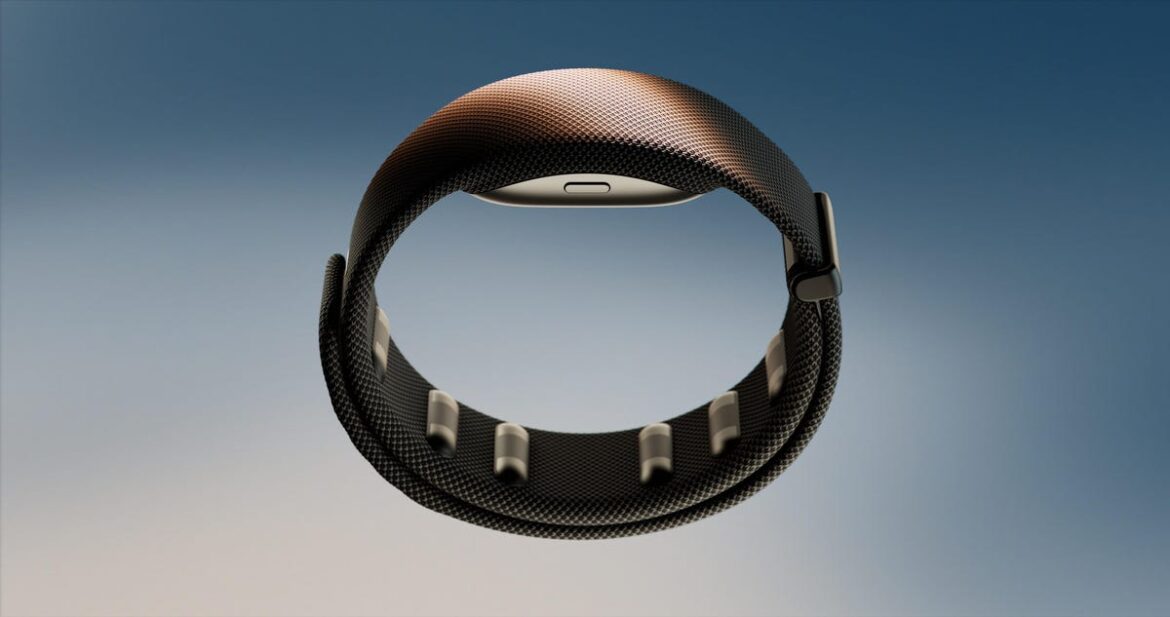Meta has been pushing the boundaries of wearable technology, and during this year’s Meta Connect, one of the most intriguing announcements wasn’t just about its new Ray-Ban Display smart glasses, but the Neural Band that comes bundled with them.
CNET recently sat down with Meta’s CTO Andrew Bosworth to dive deeper into the vision behind this futuristic wristband and at Zeflite Tech, we believe this device may eventually grow into something far bigger than just a glasses accessory.
A Glimpse Into the Neural Band
At first glance, the Neural Band looks like a simple, comfortable wristband. But beneath its surface is electromyography technology (EMG), which reads tiny electrical signals from the user’s muscles. This enables subtle gestures and hand motions to control devices opening the door to a whole new way of interacting with technology.
According to Bosworth, while the band is currently designed to work with the Ray-Ban Display glasses, Meta envisions it as a much broader interface. Imagine wearing the band daily and controlling everything from your TV to your laptop with just a flick of your wrist.
He explained it this way: “Once you start using it regularly, you put it on your wrist and you just start using it every day, it becomes infuriating that you’re not using it for more things like picking up a TV remote. We think the opportunity for this to be a bigger input platform over time is really big.”
From TV Remote to Virtual Keyboard
One of the more fascinating possibilities is typing with the Neural Band. Bosworth revealed that Meta has experimented with using two bands to create a keyboard-like input. While it’s not guaranteed to become a feature, the idea of typing without a physical keyboard simply by moving your fingers in mid-air feels straight out of science fiction.
For now, cameras can already replicate typing effectively, but as Bosworth noted, those solutions are costly. The band could potentially become the more affordable, scalable option.
Accessibility and Future Adaptation
Accessibility is another area where the Neural Band could shine. Bosworth admitted that the first version is primarily designed for people with typical motor functions, but he emphasized that adaptive functions are part of the roadmap.
The vision? Helping individuals with limited motor skills or even those without hands find new ways to interact with technology. While Meta hasn’t fully explored this use case yet, Bosworth sees no fundamental limitation preventing it in the future.
At Zeflite Tech, we see this as a huge step forward: if Meta can successfully adapt EMG-based input for accessibility, the Neural Band could redefine assistive tech a market that is both impactful and in dire need of innovation.
Fitness and the Watch Possibility
Could the Neural Band double as a fitness tracker or evolve into a smartwatch strap? Bosworth didn’t rule it out.
In fact, Meta is already experimenting with fitness integrations through its Oakley Meta Vanguard visor (in partnership with Garmin). While the Ray-Ban Displays don’t yet support fitness apps, the Neural Band’s sensors could pave the way for biometric tracking, activity monitoring, and health data collection.
Bosworth teased that Meta is working on miniaturizing the band’s components and exploring how it could integrate with other wearables like watches. If that happens, the Neural Band may eventually stop being just an “add-on” and become a central wearable, possibly competing with today’s smartwatch market.
Beyond Meta AI: Openness to Other Platforms
One limitation of the Ray-Ban Display glasses today is that they are locked into Meta’s own AI assistant. But Bosworth hinted that the long-term vision is to open the platform to third-party apps and AI models, which could include popular tools like ChatGPT or Google Gemini.
This flexibility could be a turning point. Instead of being tied only to Meta’s ecosystem, future glasses (and the Neural Band) might serve as gateways to a broader range of AI-powered experiences.
The Prescription Lens Challenge
One frustration for early adopters has been the lack of support for higher-index prescription lenses. Bosworth explained that the Ray-Ban Displays use flat lenses, which limits compatibility with stronger prescriptions.
While Meta is working on solutions, it may take design changes to fully accommodate users who require more specialized lenses. A possible fix could be magnetic inserts, similar to what some VR headsets already offer. It’s not there yet but it’s on Meta’s radar.
Zeflite Tech’s Take
The Neural Band is one of those rare devices that feels like a small step now but could become a huge leap later. Today, it’s an accessory for glasses. Tomorrow, it could be:
- A universal remote for your digital life
- A wearable keyboard that eliminates the need for physical input
- An accessibility tool for people with mobility challenges
- A fitness tracker or watch strap, blending health and tech seamlessly
- A gateway to multiple AI ecosystems
While Meta still has plenty to prove especially around usability, accessibility, and ecosystem openness the potential here is enormous.
If the Neural Band does evolve into a watch, as Bosworth subtly suggested, it could mark a new era where the wrist becomes the true command center of personal technology.
Source: This report is based on CNET’s September 26th interview with Meta CTO Andrew Bosworth.
Have any thoughts?
Share your reaction or leave a quick response — we’d love to hear what you think!

